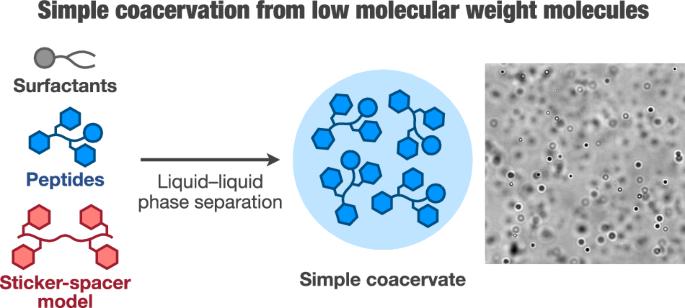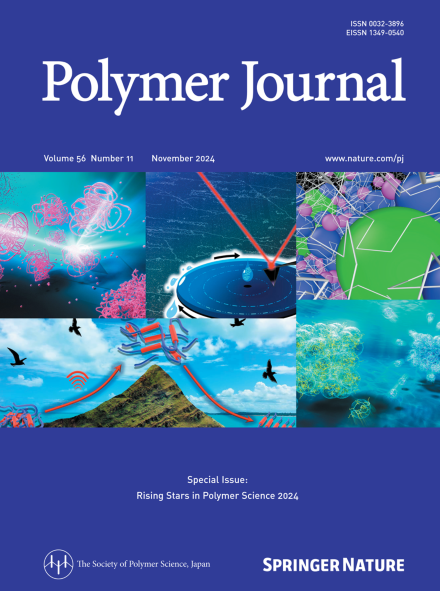一个极简的设计方法,简单凝聚从低分子量的组件
IF 2.7
4区 化学
Q3 POLYMER SCIENCE
引用次数: 0
摘要
凝聚体是通过分子组分之间的结合相互作用而形成的液-液相分离形成的凝聚的液体状组装体。由于其无膜性质,凝聚体表现出独特的动力学特性,如聚结和分子隔离,从而成为药物传递和生物事件调节的有希望的平台。本文重点介绍了由相分离的低分子量分子(LMWMs)组成的简单凝聚体的代表性例子。本文综述了基于表面活性剂和多肽的lmwm简单凝聚体的极简设计策略,并总结了它们的独特功能,包括刺激响应结构转换。这些液滴的复杂设计有望实现广泛的应用,包括生命起源的研究,人工细胞的发展,细胞内和体内蛋白质传递,生物传感和分子计算。由低分子量分子形成的简单凝聚体具有独特的动态特性,包括刺激响应相变和可逆的组装/拆卸。这篇重点综述强调了分子设计策略,从历史的角度到最近的进展。凝聚体的复杂设计为原始细胞模型、生物传感和药物传递系统提供了新的机会。本文章由计算机程序翻译,如有差异,请以英文原文为准。

A minimalist design approach to simple coacervates from low-molecular-weight components
Coacervates are condensed, liquid-like assemblies formed through liquid–liquid phase separation via associative interactions among molecular components. Owing to their membraneless nature, coacervates exhibit unique dynamic features, such as coalescence and molecular sequestration, thus serving as promising platforms for drug delivery and the regulation of biological events. In this Focus Review, representative examples of simple coacervates composed of phase-separating low-molecular-weight molecules (LMWMs) are highlighted. This review provides a minimalist design strategy for LMWM-based simple coacervates based on surfactants and peptides and summarizes their unique functions, including stimulus-responsive structural transformations. The sophisticated design of these droplets is expected to enable a wide range of applications, including studies on the origins of life, the development of artificial cells, intracellular and in vivo protein delivery, biosensing, and molecular computing. Simple coacervates formed from low-molecular-weight molecules offer unique dynamic features, including stimulus-responsive phase transitions and reversible assembly/disassembly. This Focus Review highlights molecular design strategies, from historical perspectives to recent advancements. The sophisticated design of coacervates provides new opportunities in protocell models, biosensing, and drug delivery systems.
求助全文
通过发布文献求助,成功后即可免费获取论文全文。
去求助
来源期刊

Polymer Journal
化学-高分子科学
CiteScore
5.60
自引率
7.10%
发文量
131
审稿时长
2.5 months
期刊介绍:
Polymer Journal promotes research from all aspects of polymer science from anywhere in the world and aims to provide an integrated platform for scientific communication that assists the advancement of polymer science and related fields. The journal publishes Original Articles, Notes, Short Communications and Reviews.
Subject areas and topics of particular interest within the journal''s scope include, but are not limited to, those listed below:
Polymer synthesis and reactions
Polymer structures
Physical properties of polymers
Polymer surface and interfaces
Functional polymers
Supramolecular polymers
Self-assembled materials
Biopolymers and bio-related polymer materials
Polymer engineering.
 求助内容:
求助内容: 应助结果提醒方式:
应助结果提醒方式:


